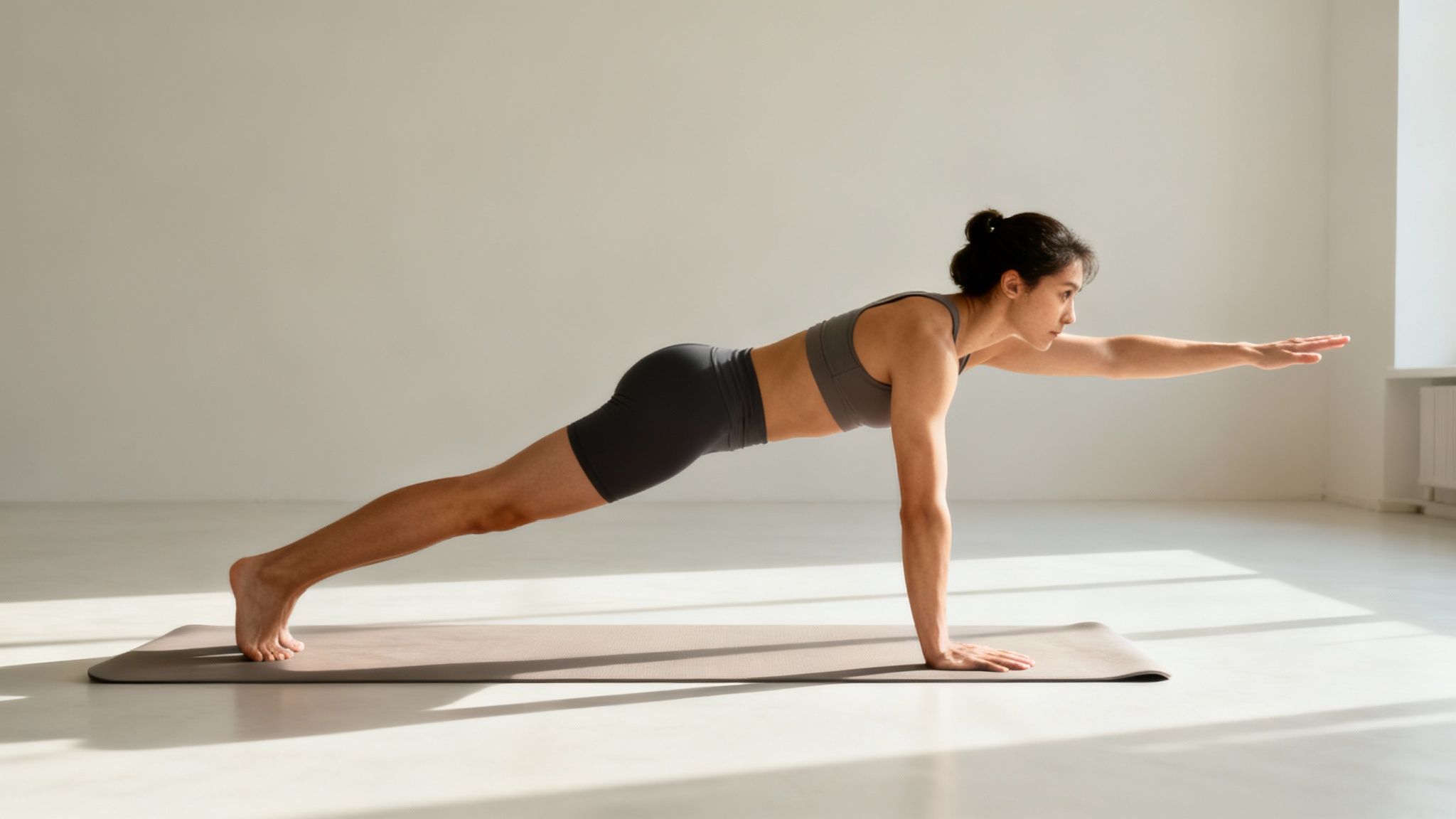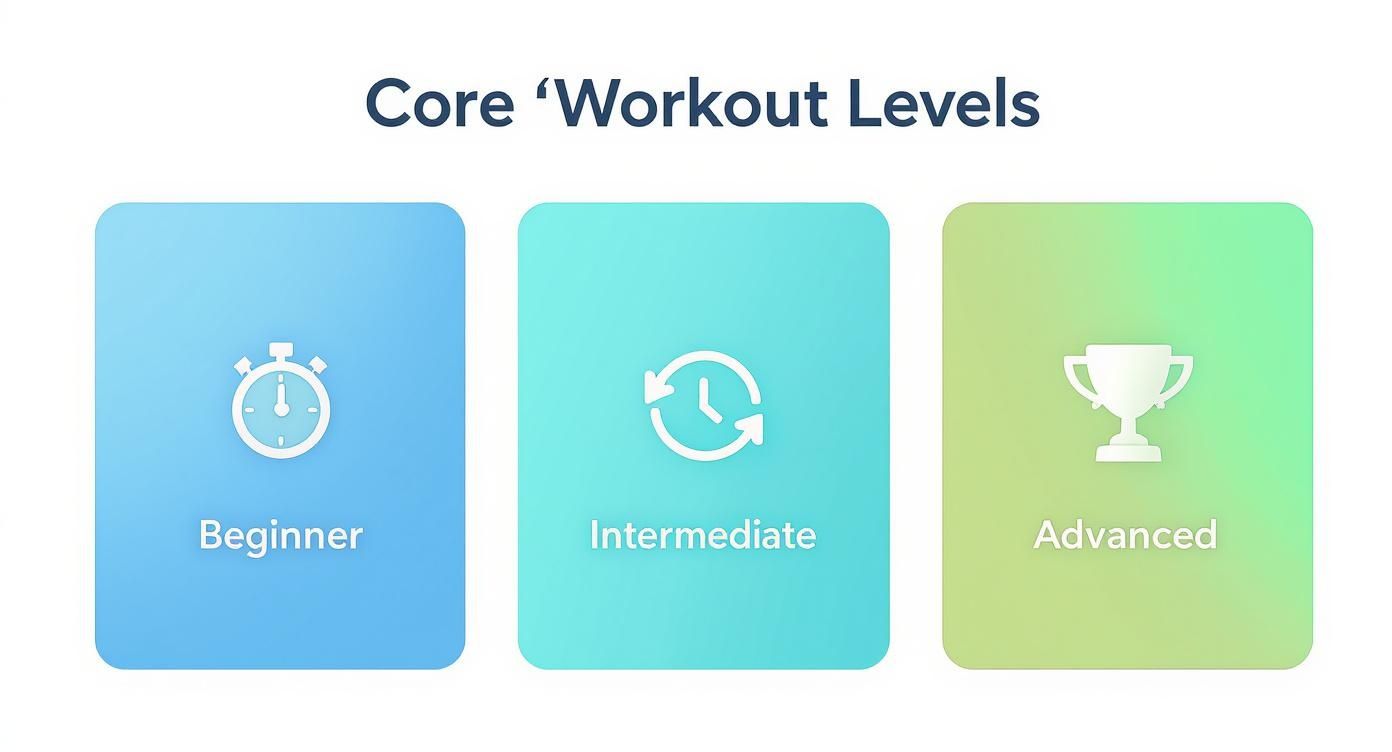Ab Workout for Runners to Boost Speed and Prevent Injuries
- Flourish Everyday Health And Fitness

- 3 days ago
- 5 min read
A strong core isn't just about looking good; for a runner, it's the stable foundation that turns raw leg power into efficient, forward motion. It keeps your form intact when fatigue hits and helps you dodge injuries stride after stride. Think of your core as the chassis of your body—when it’s solid, everything else works better.
Index
Why Core Strength Powers Every Stride

Runners often think logging mileage is enough to get faster, but skipping core work is like dropping a powerful engine into a flimsy frame. A stable core keeps your pelvis and spine steady, letting arms and legs move with maximum efficiency. Weak core muscles lead to hip drop, excessive rotation, wasted energy, and a higher risk of injury. Just 2–3 core sessions per week, with 2–3 sets per exercise, plugs those energy leaks and builds resilience.
At-a-Glance Benefits of Core Training for Runners
Benefit | Impact on Running Performance |
|---|---|
Improved Form | Less torso rotation and hip drop, more efficient stride. |
Increased Power | Better force transfer from legs through the torso. |
Enhanced Endurance | Delays fatigue by minimizing stabilizing energy leaks. |
Greater Stability | Improves balance on uneven terrain or during sprints. |
Reduced Injury Risk | Decreases strain on lower back, hips, knees, and hamstrings. |
For more on injury prevention, check out how to prevent running injuries.
Functional Ab Exercises for Runners

Runners need a core that resists twists, prevents lower-back arch, and stops side-to-side bending. Here are five exercises that mimic running mechanics:
Plank With Leg Lift
Setup: Forearm plank, elbows under shoulders, body in one line.
Movement: Lift one leg ~6 inches, hold 2 seconds, switch.
Tip: Squeeze the raised glute—no pelvis tilt.
Bird-Dog Reach
Start: On all fours.
Action: Extend right arm + left leg, pause, switch.
Tip: Keep ribs to hips, no arching.
Russian Twist
Position: Sit, knees bent, feet off ground, torso at 45°.
Movement: Rotate from rib cage, tap floor each side.
Tip: Engage obliques; add light weight to progress.
Dead Bug
Setup: Lying on back, arms up, knees bent at 90°.
Execution: Lower opposite arm and leg near the floor, return.
Cue: Exhale on descent.
For more core variety, see Pilates exercises for core strength.
Side Plank
Form: Side lying, elbow under shoulder, feet stacked.
Hold: Hips high, shoulders aligned.
Progression: After 45–60s, add hip dips.
Core Workout Routines for All Levels
Consistency beats intensity. Better to do 10 solid minutes three times a week than one crushing 30-minute session that leaves you sore.
Beginner Flow: 10 Minutes
Warm-Up: Cat-Cow (5–8 reps), pelvic tilts.
Bird-Dog Reach: 10 reps/side
Dead Bug: 10 reps/side
Forearm Plank: 30s
Glute Bridges: 15 repsRest 60s, repeat once.
Intermediate Circuit: 15 Minutes
Warm-Up: Spiderman lunges, leg swings.
Plank with Leg Lift: 8 reps/side
Russian Twist: 12 reps/side
Side Plank: 30s/side
Mountain Climbers: 30sRest 45s between, 2 rounds.
Advanced Sequence: 20 Minutes
Warm-Up: Inchworms, high knees.
Plank Pull-Throughs: 8 reps/side
Hanging Knee Raises: 12 reps (or reverse crunches)
Side Plank with Hip Dip: 12 reps/side
V-Ups: 15 repsRest 30–45s, 3 rounds.
After 8 weeks, college runners saw improved economy and lower oxygen consumption at high intensity[^1].
Sample Core Workout Progression
Level | Duration | Focus | Example Exercises |
|---|---|---|---|
Beginner | 10 min | Foundational Stability | Dead Bug, Forearm Plank |
Intermediate | 15 min | Dynamic Control & Endurance | Russian Twist, Side Plank |
Advanced | 20 min | Strength & Power Transfer | Plank Pull-Throughs, V-Ups |
Integrate Core Training into Your Running Schedule
Core sessions work best after easy runs or on cross-training days. Avoid heavy core work before key speed or long runs.
Scheduling Options:
Post-Run Core (10–20m): 2–3×/week after easy runs.
Dedicated Day: Longer session on non-running day.

Example Week (3-Day Runner):Mon: Easy Run + 15m CoreTue: Cross-TrainingWed: TempoThu: RestFri: Easy Run + 15m CoreSat: Long RunSun: Active Recovery
Sprint Training for Core Development

Sprints fire up your core like nothing else. Each stride becomes a ballistic brace, engaging upper and lower abs. A simple sprint session once a week delivers hundreds of contractions.
Simple Sprint Workout:
Reps: 4–6
Distance: 20–40 m
Intensity: 90–95% max
Recovery: Walk back, full rest
For supplement insights, see Creatine for Endurance Athletes to Unlock Faster Runs.
Shoe Reviews for Runners
Choosing the right shoe supports your core and reduces injury risk. Here are top picks for men and women.
Men’s Top Athletic Shoes
Nike Air Zoom Pegasus - Responsive cushioning, moderate stability, durable outsole. - Ideal for daily runs and tempo workouts.
Brooks Ghost - Soft midsole, balanced support, smooth transitions. - Great for long distances and easy runs.
ASICS Gel-Cumulus - Gel tech for shock absorption, breathable mesh upper. - Best for versatile training and recovery days.
Women’s Top Athletic Shoes
New Balance Fresh Foam 880 - Plush Fresh Foam midsole, secure fit, rubber outsole. - Perfect for marathons and long training runs.
Saucony Ride - PWRRUN cushioning, flexible sole, snug heel. - Excellent for speedwork and tempo sessions.
Hoka Clifton - Maximal cushioning, lightweight design, early-stage meta-rocker. - Ideal for high-mileage and recovery runs.
Well-Being Trends Comparison
Here's how popular methods stack up for runners’ health and recovery:
Trend | Focus | Benefits | Considerations |
|---|---|---|---|
Core Strength Routines | Functional stability | Improves economy, reduces injury risk | Requires consistency |
Pilates & Yoga | Flexibility & control | Enhances posture, mobility, mind-body | May lack direct running specificity |
Foam Rolling & Massage | Recovery | Reduces muscle soreness, improves flow | Temporary relief without strength work |
Got Questions About Core Workouts? I’ve Got Answers.
How Often Should I Do This?
Aim for 2–3 core sessions per week, 15–20 minutes each, preferably after easy runs.
Does This Replace Strength Training?
No. Core work builds the stabilizing chassis; full strength training targets glutes, quads, and hamstrings.
What If I Feel It in My Lower Back?
Back strain means deep core muscles are off. Regress the exercise—e.g., knee plank or smaller Dead Bug movements.
How Do I Track Progress?
Hold Time: Log plank/side plank durations.
Reps/Sets: Add reps or sets once form is perfect.
Exercise Progression: Use bands or weights for bird-dogs and twists.
At Flourish-Everyday, we believe that a strong, informed approach to fitness is the key to unlocking your potential. Find more shoe reviews and health information at https://www.flourish-everyday.com.
References
[^1]: Research on college runners: https://pmc.ncbi.nlm.nih.gov/articles/PMC6407754/[^2]: Pilates exercises for core strength: https://wundacore.com/blogs/news/pilates-exercises-for-core-strength[^3]: How to prevent running injuries: https://www.flourish-everyday.com/post/how-to-prevent-running-injuries-top-tips-for-safe-running[^4]: Strength training for distance runners: https://www.flourish-everyday.com/post/strength-training-for-distance-runners-boost-your-pace[^5]: Creatine for endurance athletes: https://www.crazymuscle.com/blogs/fitness/creatine-for-endurance-athletes
Comments